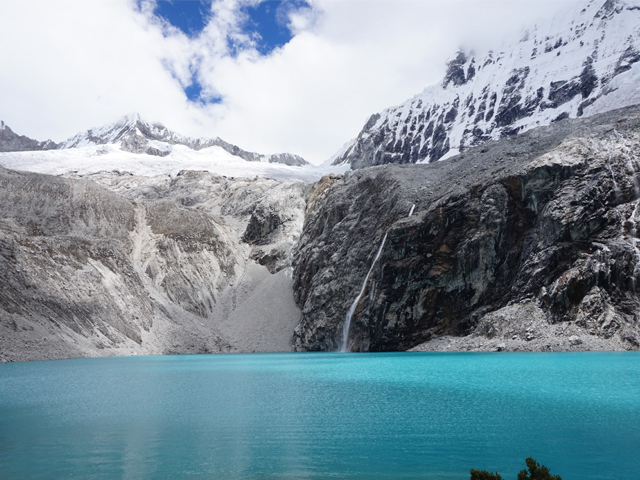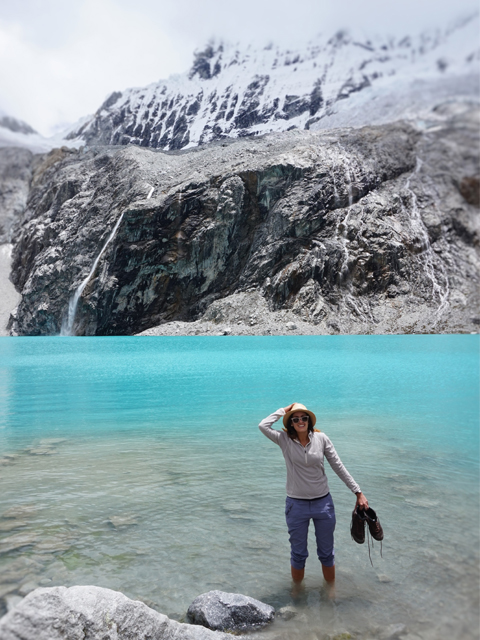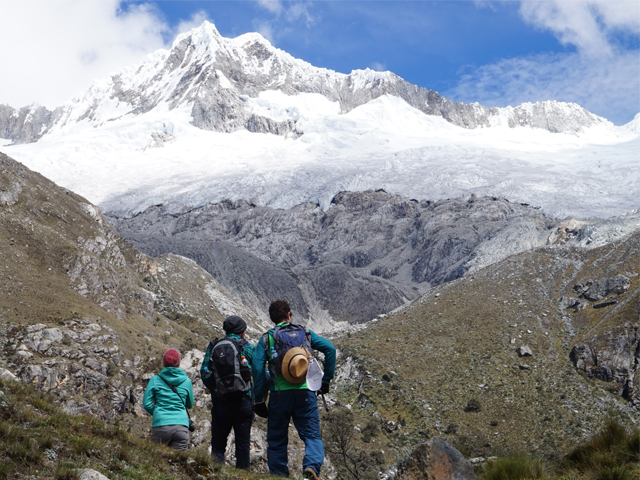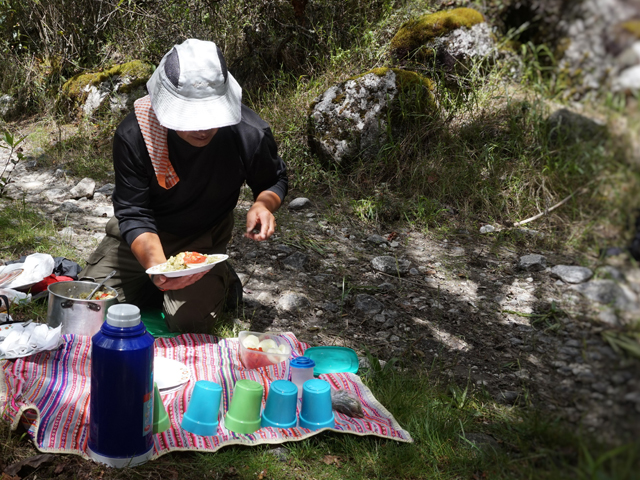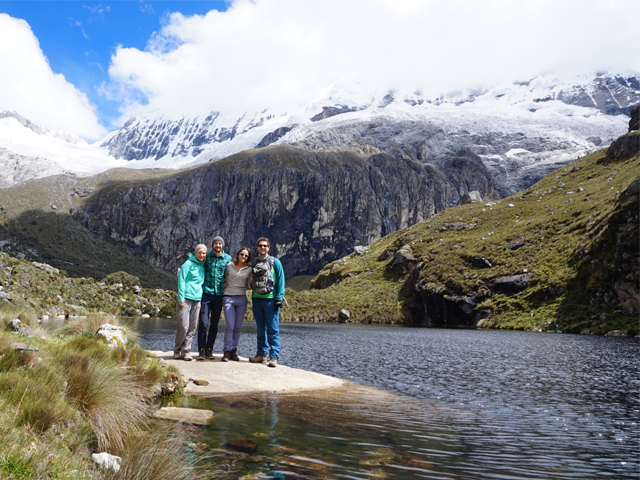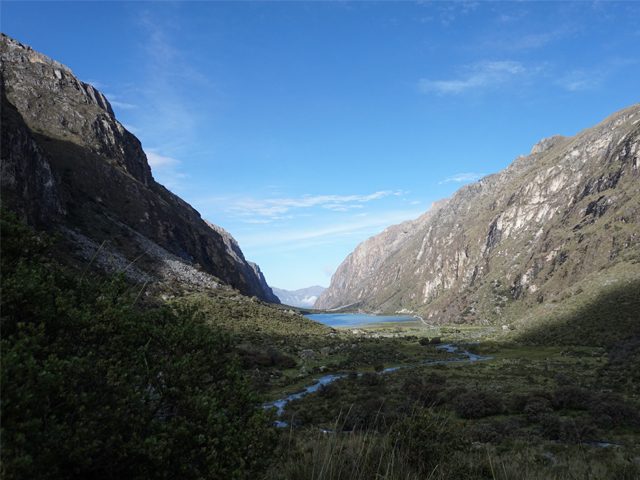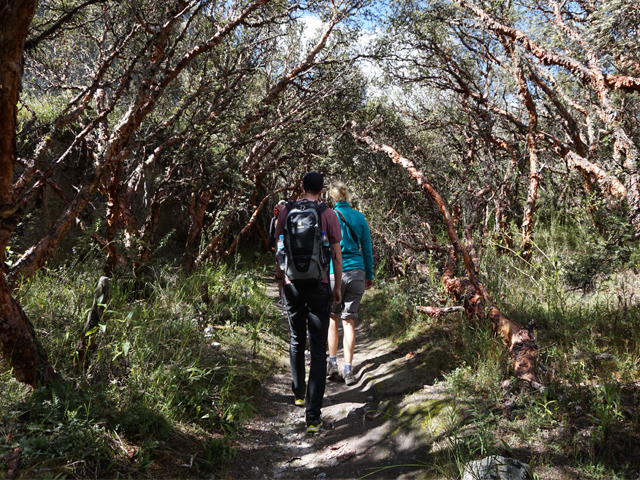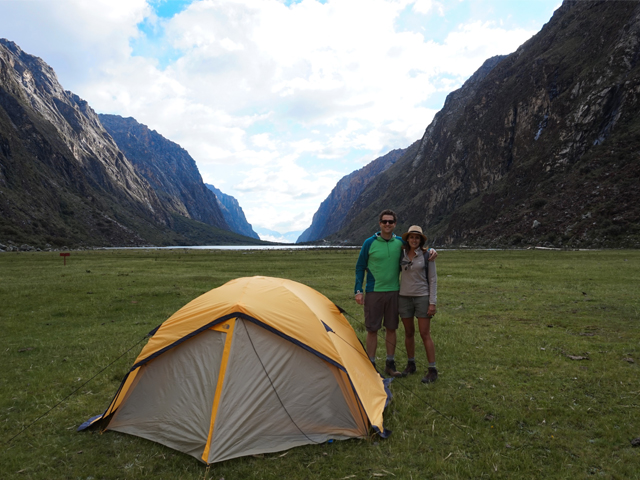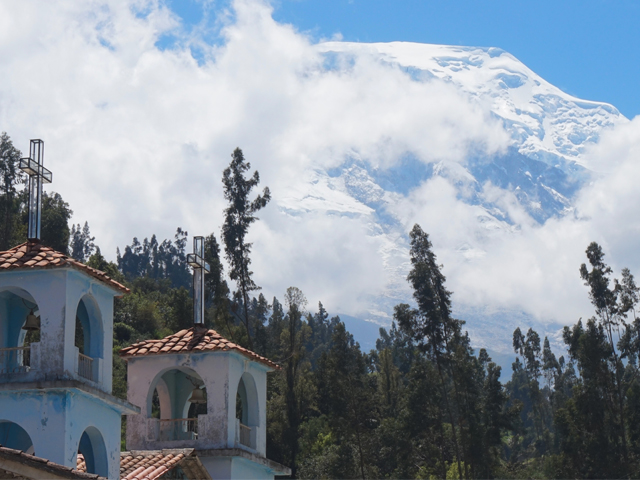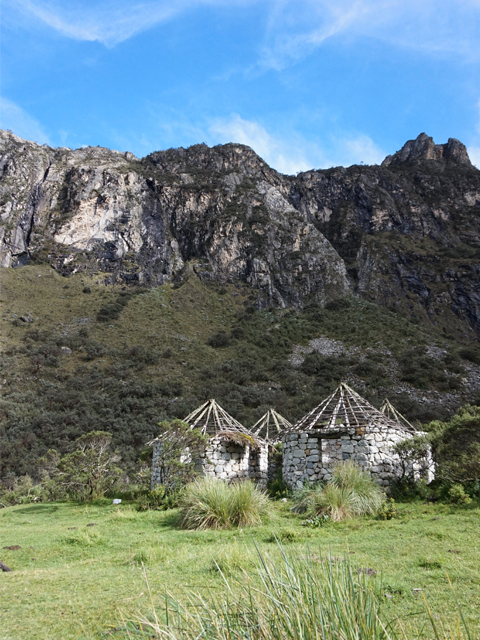This was my first hiking trip in Peru, and what a place to start! The hike to Laguna 69 was one of the top on my peru adventure travel bucket-list. The Cordillera Blanca mountain range attracts hiking enthusiasts and adrenaline junkies from all over the world. As the world’s second highest mountain range after the Himalayas, the region is rich with offerings of all sorts of outdoor pursuits from hiking, mountain-biking, ice-climbing, and more.
Hike to Laguna 69
I visited the region for a long weekend with my boyfriend Steven and friends Evi and Helge. Since we had limited time and hiking experience, we decided the priority was to see Laguna 69 – the jewel in the Cordillera Crown. Located in the Huascarán National Park at 4,600m (15,092ft) above sea level, it’s one of the more accessible locations in the region, and can be visited as a day hike or a two day trip with camping. We opted for the latter. The trek is deemed as relatively challenging for non-regular hikers, thanks to the altitude and short, steep incline at the end, or as a gentle trek for the experienced – so the difficulty level is relative!
We set out early in the morning with our guide Epi, who has lived and worked in the mountains his whole life – first as a porter, then a cook, and now as a trained and registered guide for the national park. Our complete package included all transport, meals, tents and equipment, which meant we didn’t have to worry about the arrangements, and only had to carry our day-packs. After a very bumpy two and a half hours by car from Huaraz, we set off on foot into the hills.
One of my favourite moments was our picnic lunch on the first day. After a few hours hiking, we stopped at a quiet spot next to a mountain stream and Epi laid out a picnic blanket, and a feast appeared out of his backpack. We had chicken with rice cooked with spinach and parsley, still warm from the pot, with a lovely salad. I love eating al fresco, and really appreciated the tranquility of the moment – there was no one else in sight, and all we could hear was water flowing and birds chirping. For me, this is why you go hiking.
Later that afternoon we arrived at Laguna Chinancocha. Accessible by road it was full of visitors snapping selfies during Semana Santa, Peruvian national holidays for Easter which sees an influx of domestic tourists. We took a few photos, marveling at the beautiful turquoise water and dramatic glacier backdrop, and then continued on to our campsite beside the next lake along the valley – Laguna Orconcocha.
Camping at Laguna 69
Epi’s porter and driver had already set up our camp, in a beautiful isolated spot beside the lake. There were a few local families enjoying the national park, and Steven joined in the kids’ football game. They loved laughing at the out-of-breath foreigner struggling with the altitude.
The next morning we were woken at dawn by Epi with a hot cup of coca tea. The serenity and beauty of the lake at dawn, with mist on the water and the moon still in the sky was another highlight of the trip. We didn’t have long to sit around and enjoy the view though – following a hearty breakfast we set out for the remaining hike to Laguna 69.
From our campsite it took us about 4 hours to get to the Laguna, with frequent breaks to catch our breath and take photos. We passed smaller lakes, incredible waterfalls and ancient glaciers – wherever you turned, there was a stunning view to take your breath away. In the quiet of the morning we saw lots of birds, and a type of wild hare, called a viscacha.
Finally, when I thought I couldn’t go any further, we reached the top, and between the hills in the foreground could see a tiny triangle of blue ahead, with a waterfall perfectly aligned in the middle – the famous Laguna 69. Because we set off so early we’d got ahead of the day trippers, and there were only a few other hikers at the lake. But visiting almost any other time of year – that doesn’t fall on a main national holiday – peace and serenity would be guaranteed in this relatively isolated spot.
Water so blue and clear seems like it should only be found on the shores of a tropical island. The fact that we were at 4,600m (15,092ft) above sea level made it that much more remarkable. Fed by the slow trickle of the surrounding glaciers, the Lagoon’s brilliant turquoise water is contrasted by the rocky scree slopes and the white ice and snow surrounding it. When the clouds part and the sun shines down, the whole lake is illuminated and simply stunning.
I could not recommend this hike more. You need a reasonable level of fitness, and acclimatizing to the altitude first is recommended, but it’s a good challenge for beginner-hikers. I can’t wait to go back to the Cordillera Blanca and discover more.
Aracari offers a range of activities in the Cordillera Blanca, from muti-day treks, mountain-biking and visits to the pre-Incan site of Chavin de Huantar. If you’re not a hiking enthusiast, we also have a selection of excellent eco-friendly lodges where you can relax and soak up the mountain air and the views. To start planning your outdoor adventure, contact us at travel@aracari.com.

